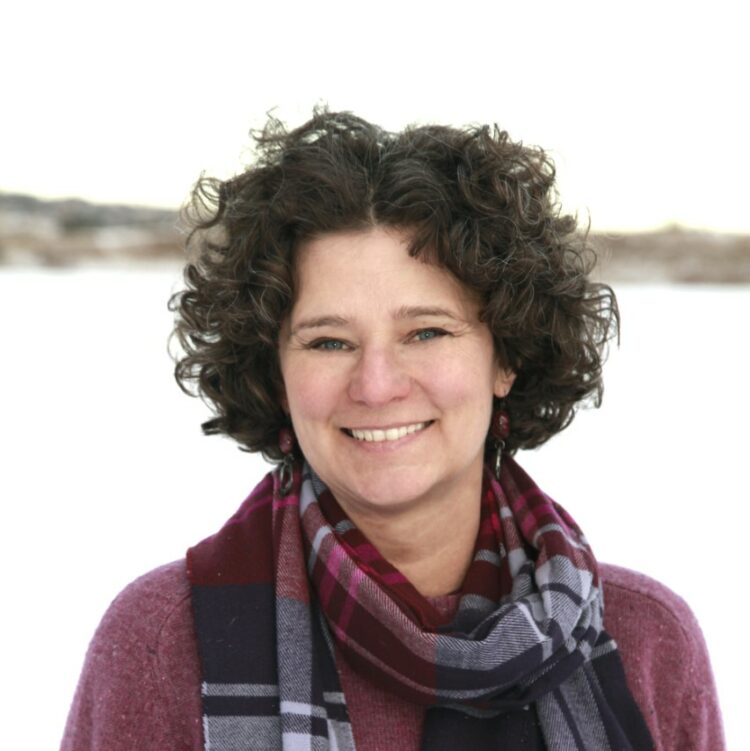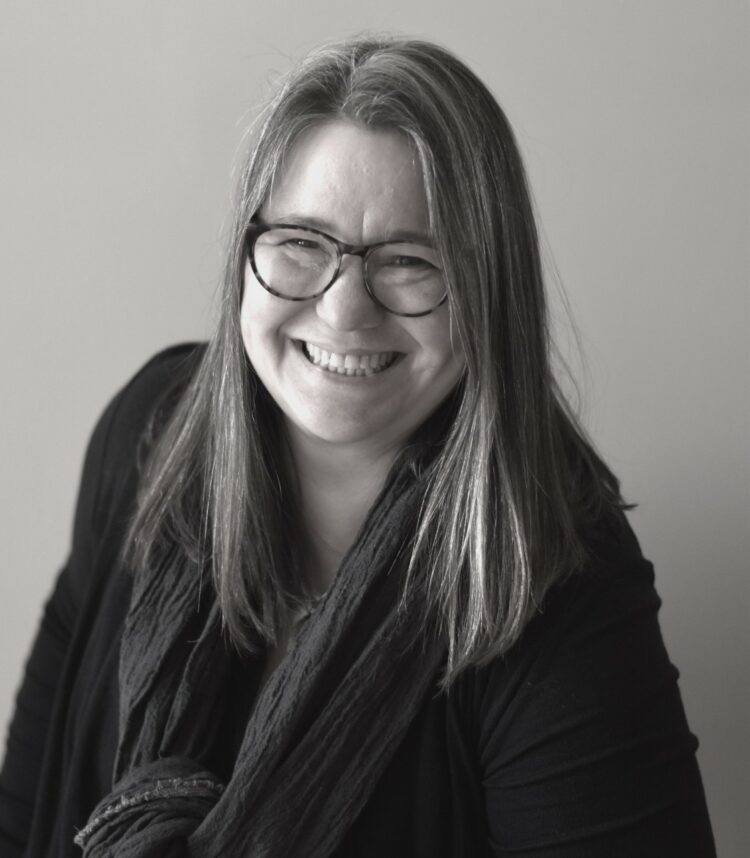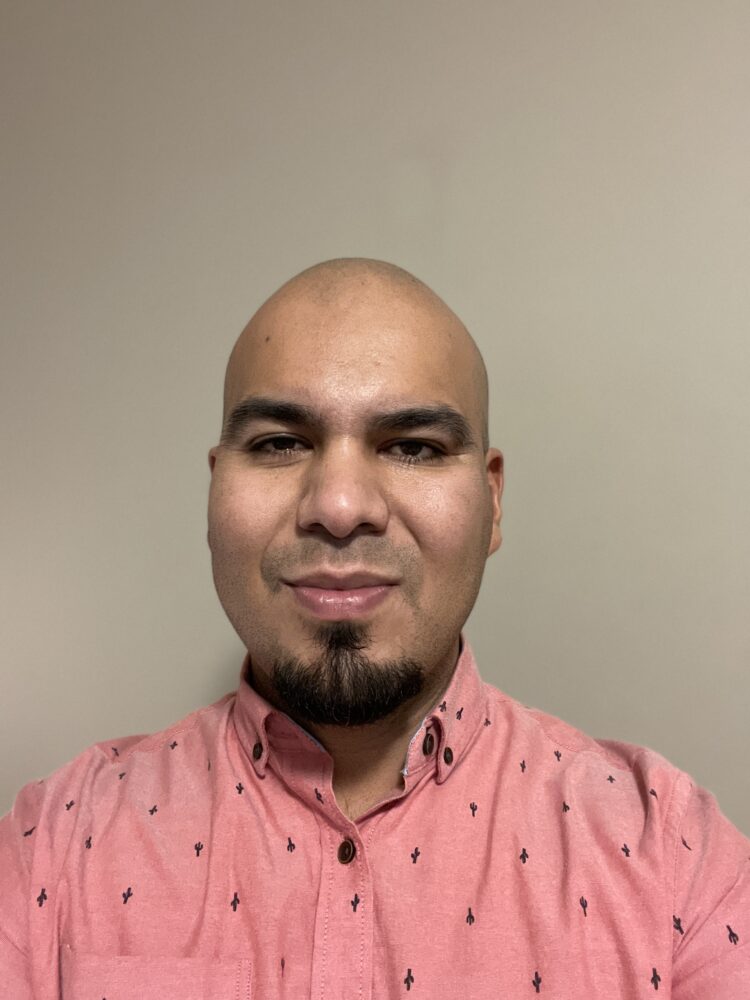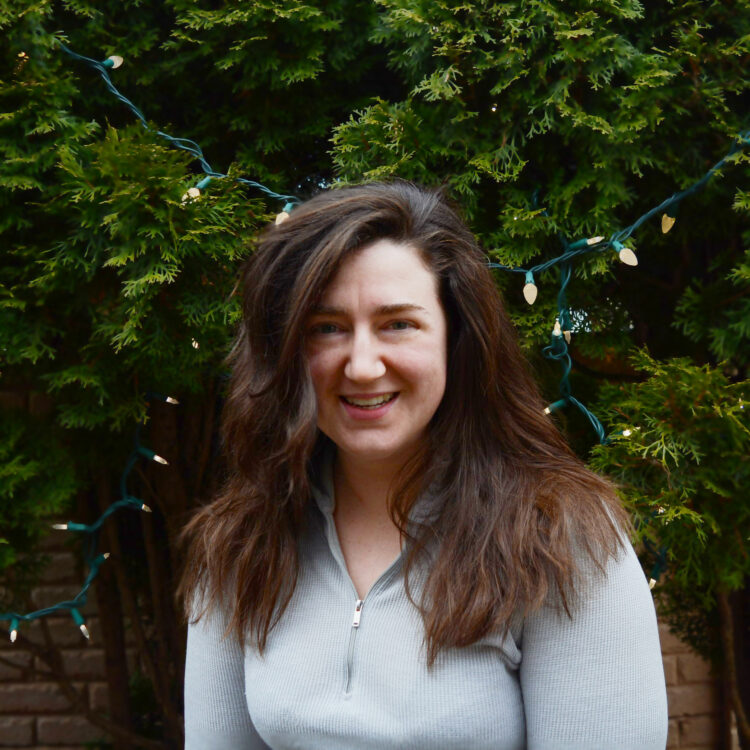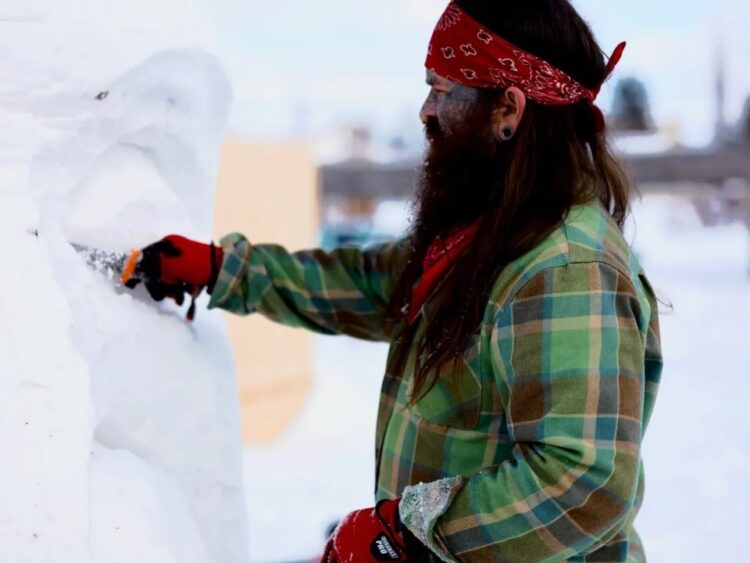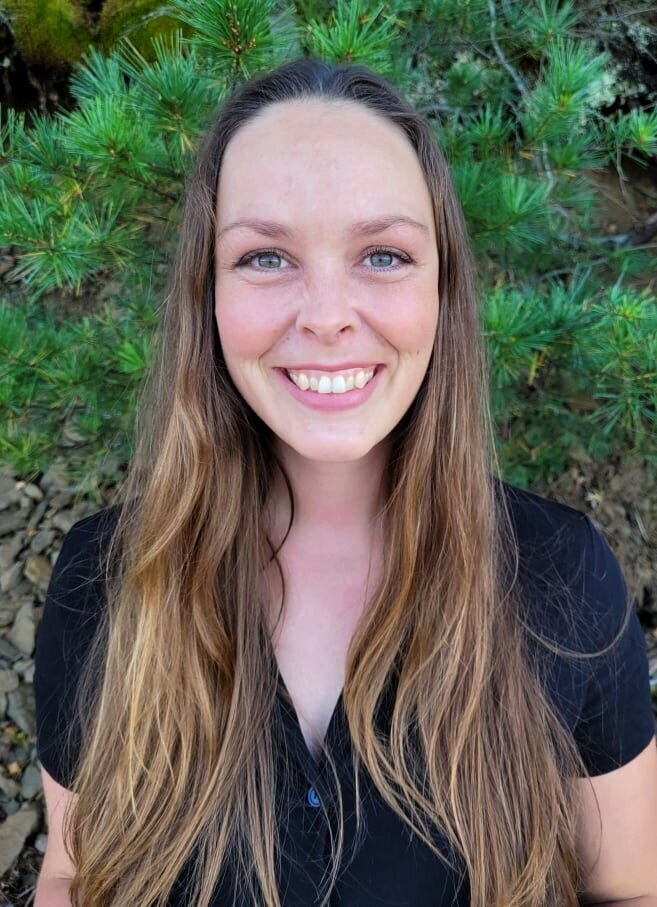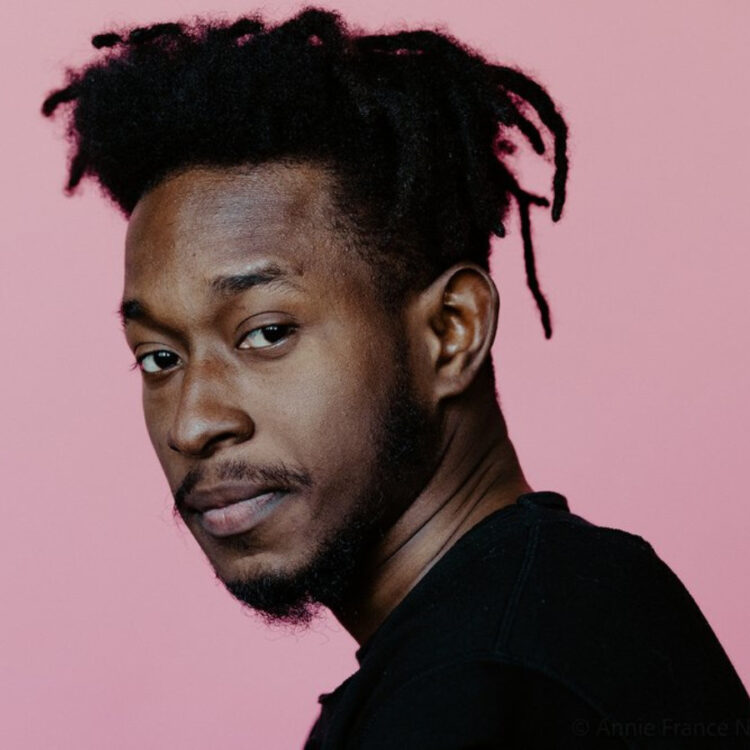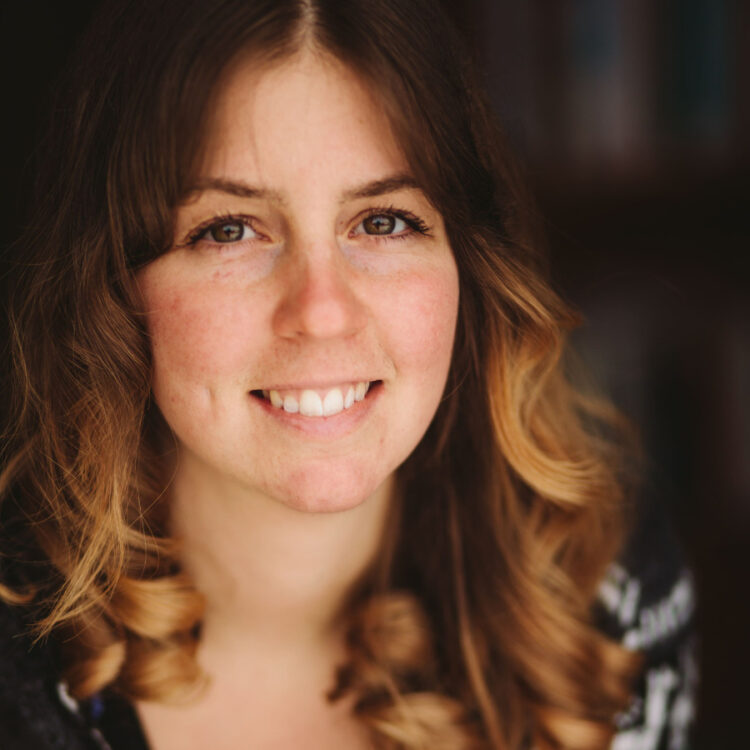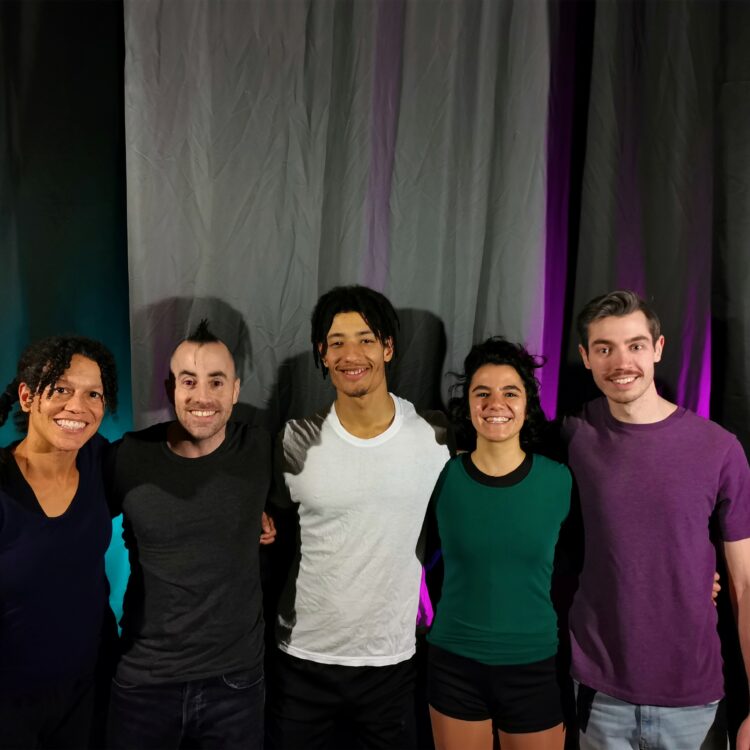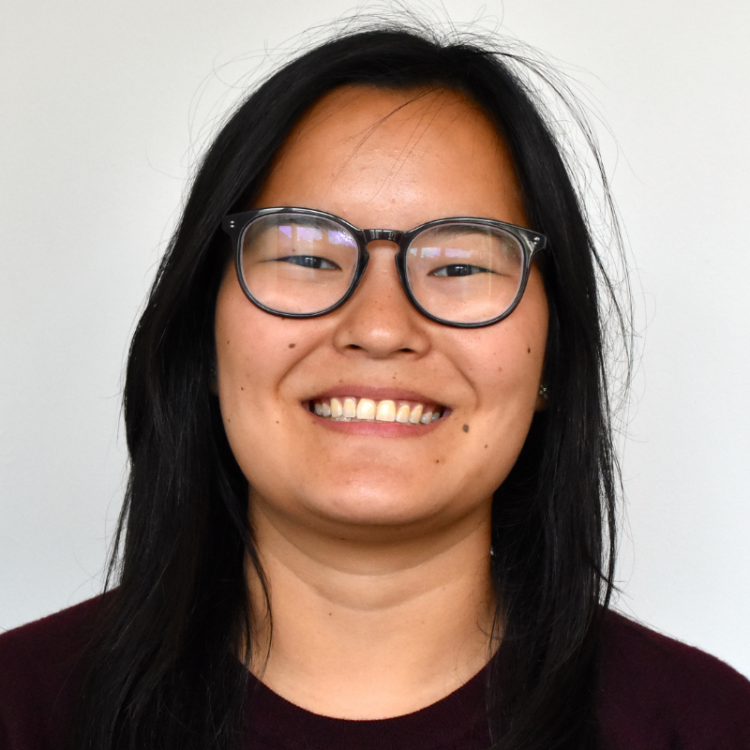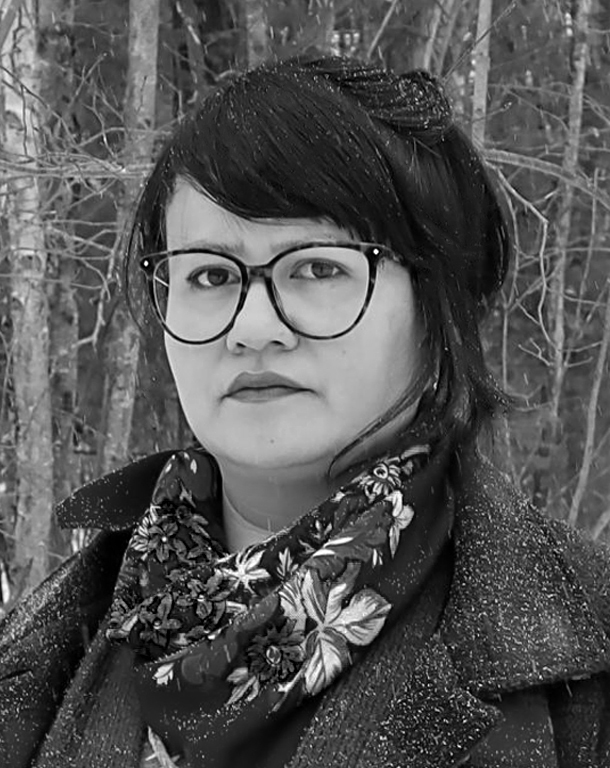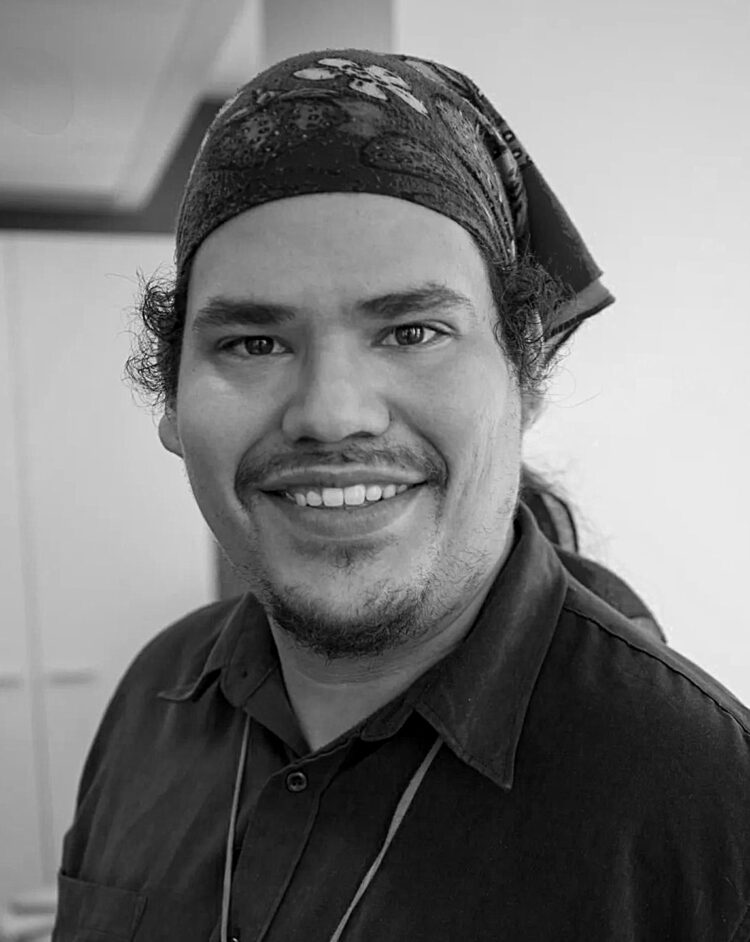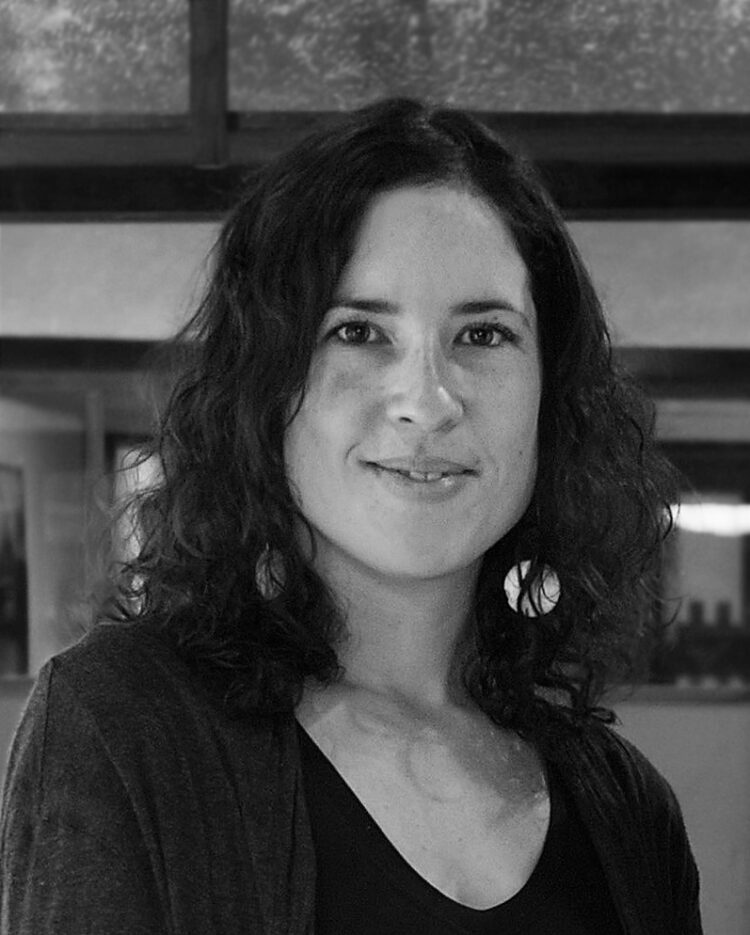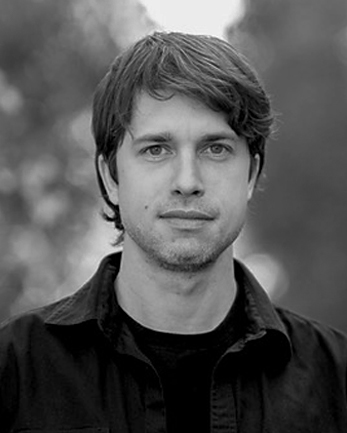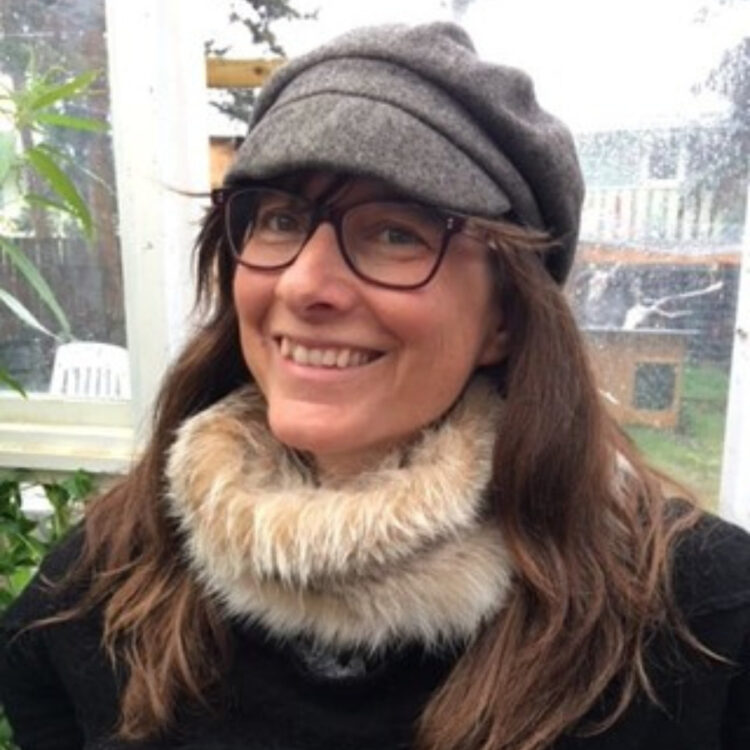
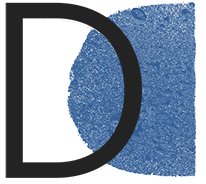
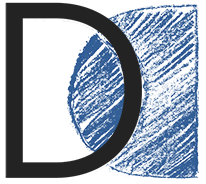



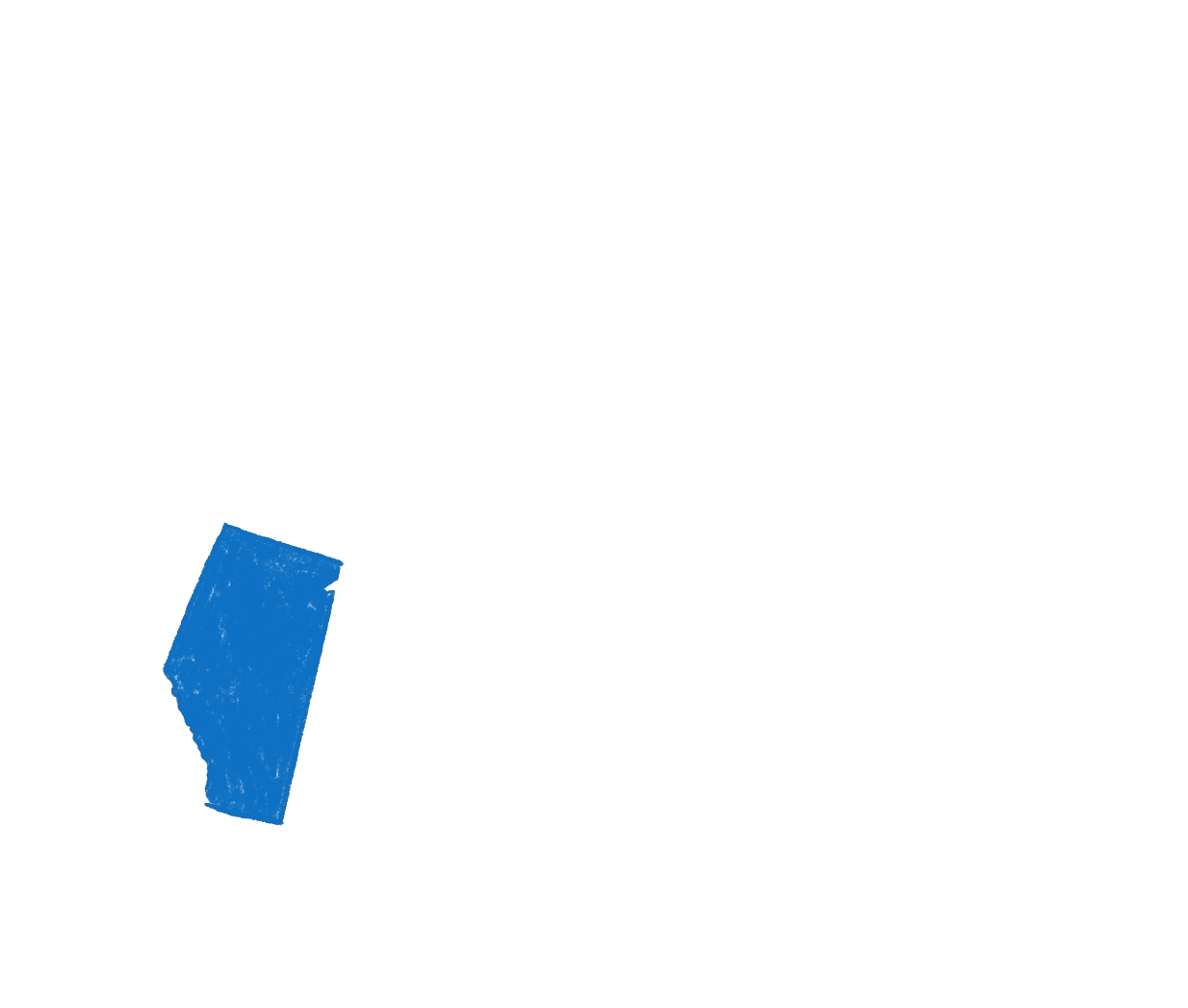










Interactive map
Discover the various projects of the Riopelle Dialogues program, the artist-mediators from Canada’s provinces and territories involved in the Riopelle centennial celebrations.
Realized within the framework of the centenary
The creation of the Foundation was inspired by the dream of Jean Paul Riopelle, who wished to pass on his passion for art, his vision and inspire the next generation of artists to explore, innovate and surpass their creative potential.

Territories of Dreams, produced by the Conversation Collective, is a temporary and participatory art installation rooted in nature. Artists Patricia Lortie and Sabine Lecorre-Moore selected a crocheted tapestry made by a group of retirees in Calgary to tie together the dreams of Alberta’s Francophone, Indigenous and Anglophone communities.
Traveling from the north to the south of the province, they visited five schools where they gave fabric writing workshops, during which they collected the dreams of the students, as well as artistic workshops inspired by the works of Jean Paul Riopelle. In response to the Riopelle Foundation’s call to “go towards nature”, the members of the collective installed the completed tapestry on a structure made from tree trunks.
The work will be exhibited throughout the summer in the sculpture park at Calgary’s Kiyooka Ohe Arts Centre (KOAC), a public space that combines art and nature. In this enchanting setting, the Conversation Collective and the KOAC invite Albertans to complete the Territories of Dreams installation by adding their own dreams to it.
Information:
- The Conversation Collectivehas held 16 artistic workshops.
- More than 1,000 dreams were collected during the month of April.
- Conversation Collective members travelled 4,000 km by car and plane.
- Conversation Collective members have worked more than 500 hours since early January.
- Conversation Collective members have gathered hundreds of photographs, videos and time lapses.
- To date, 25 volunteers have helped carry out the project by donating their time to do crocheting, attach crocheted pieces, prepare ribbons for visitors to the Centre, and perform administrative and other tasks.
- The crocheted tapestry artwork is circular in shape, measuring 7 metres in diameter and 22 metres in length.
Important dates in 2023 📅
- April 4 → School visit #1: West Island College, Calgary + Launching ceremony with the participation of a First Nations Elder
- April 5 → School visit #2: La Source, Calgary – School visit #3: Kawape’no, Slave Lake
- April 6 → School visit #4: La Vérendrye, Lethbridge – School visit #5: Boréale, Fort McMurray
- May 17-18 → Fabrication of the installation/sculpture
- June 17 → Launch Celebration at KOAC – Ceremony with a First Nations Elder – Visitors add their dreams – Open to all
- Until September 30 → Exhibition at KOAC

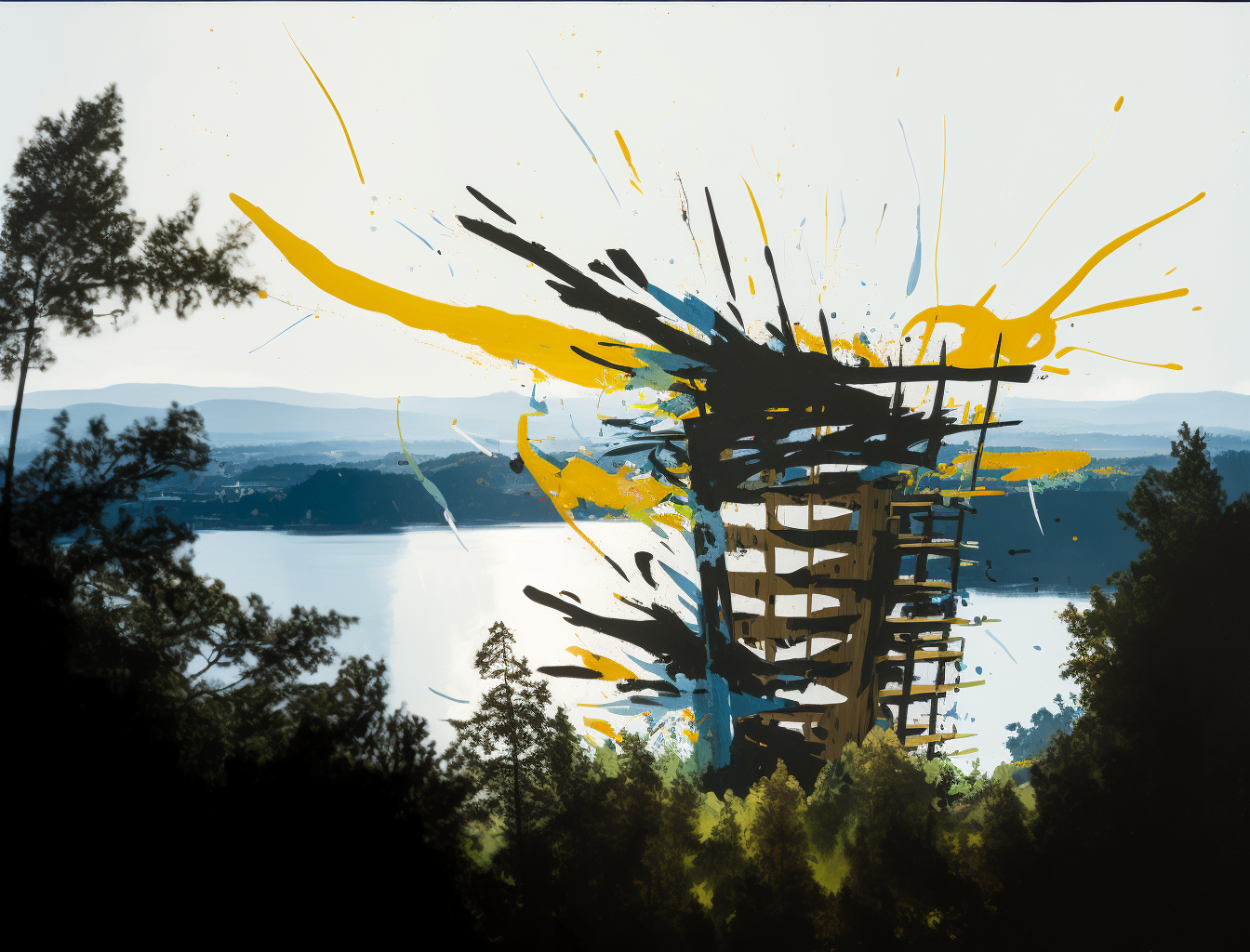
Automatic Landscapes: Exploring the Art of Jean Paul Riopelle through AI
With their project entitled “Automatic Landscapes: Exploring the Art of Jean Paul Riopelle through AI” to be displayed at the Malahat Skywalk from June to September, 2023, Laura-Beth McDonald and Juan Ramirez are giving the public an opportunity to (re)discover the work of Canadian painter Jean Paul Riopelle .
Their project centres around a series of workshops, where participants can learn about Riopelle’s life and work and use the artificial intelligence-image generator Midjourney to reimagine the artist’s work in a modern-day context.
Using descriptive language prompts and activities designed to educate participants about AI capabilities, the final exhibition will consist of large-scale art installations set within the stunning Vancouver Island landscape of Malahat Skywalk’s mature arbutus and Douglas fir forests. Visitors will experience the Riopelle-inspired works, while learning more about the artist’s life and artistic repertoire.
COMMUNITY ENGAGEMENT
Community engagement is a core part of the project because the entire final exhibition is created from images generated in a series of workshops with young people, students and artists.
Laura-Beth and Juan held exploration and learning sessions with young people at the Victoria Native Friendship Centre, students at Frances Kelsey Secondary School and artists from around the province hosted by Arts BC. They also intend to hold a final session with students at North Island Secondary School and with Creative Coast, a Vancouver Island-based arts organization with a mandate to increase access to art and technology across the region.
During the sessions, participants completed a variety of hands-on and virtual educational activities that included creating magazine collages to mimic the working process of AI-image generators, such as Midjourney. Groups also tried to “reverse engineer” a simple image using descriptive language and sequences of word combinations that were then fed into the AI-image generator.
The sessions taught participants about the benefits and drawbacks of tools such as AI-image generators, yet allowed everyone to experience the magic of seeing words turn into stunning visuals, all contextualized within the style of Jean Paul Riopelle and Canadian painting.
RELATION TO RIOPELLE’S WORK
During the engagement sessions, Laura-Beth taught participants about themes in Jean Paul Riopelle’s work and shared images from his collection to inspire workshop participants. Juan provided language prompts that shared a connection to Riopelle’s technique, subjects and art historical context, while encouraging participants to think about what Riopelle’s work would look like today or even 100 years into the future.
Focusing on Riopelle’s deep connection to nature, the engagement sessions also highlighted the Malahat Skywalk and the breath-taking natural surroundings where the final exhibition takes place. Participants were given a virtual tour of the Skywalk and invited to image the final pieces set within the forested landscape of Vancouver Island.
STRENGTHS
AI-generated images are a controversial, but important topic and one in which Riopelle would have likely engaged, being somewhat of a modern-day rebel himself. Throughout the project, we were able to not only have in-depth and meaningful discussions about the ethical use of AI-image generators, but also use the tool as an incredibly accessible, fun and enjoyable way to (re-)imagine the work of a celebrated and beloved Canadian painter.
The project was structured to bring participants of all ages together and allow then to see their words transform into works of art, all inspired and contextualized through the lens of Jean Paul Riopelle.
We are excited to see the final outdoor exhibition come together in a truly unique and supernatural experience.
Important dates in 2023 📅
- June 7-8 → Installation at Malahat Skywalk
- June 20 → Private opening
- Starting June 20 → Exhibition at Malahat Skywalk

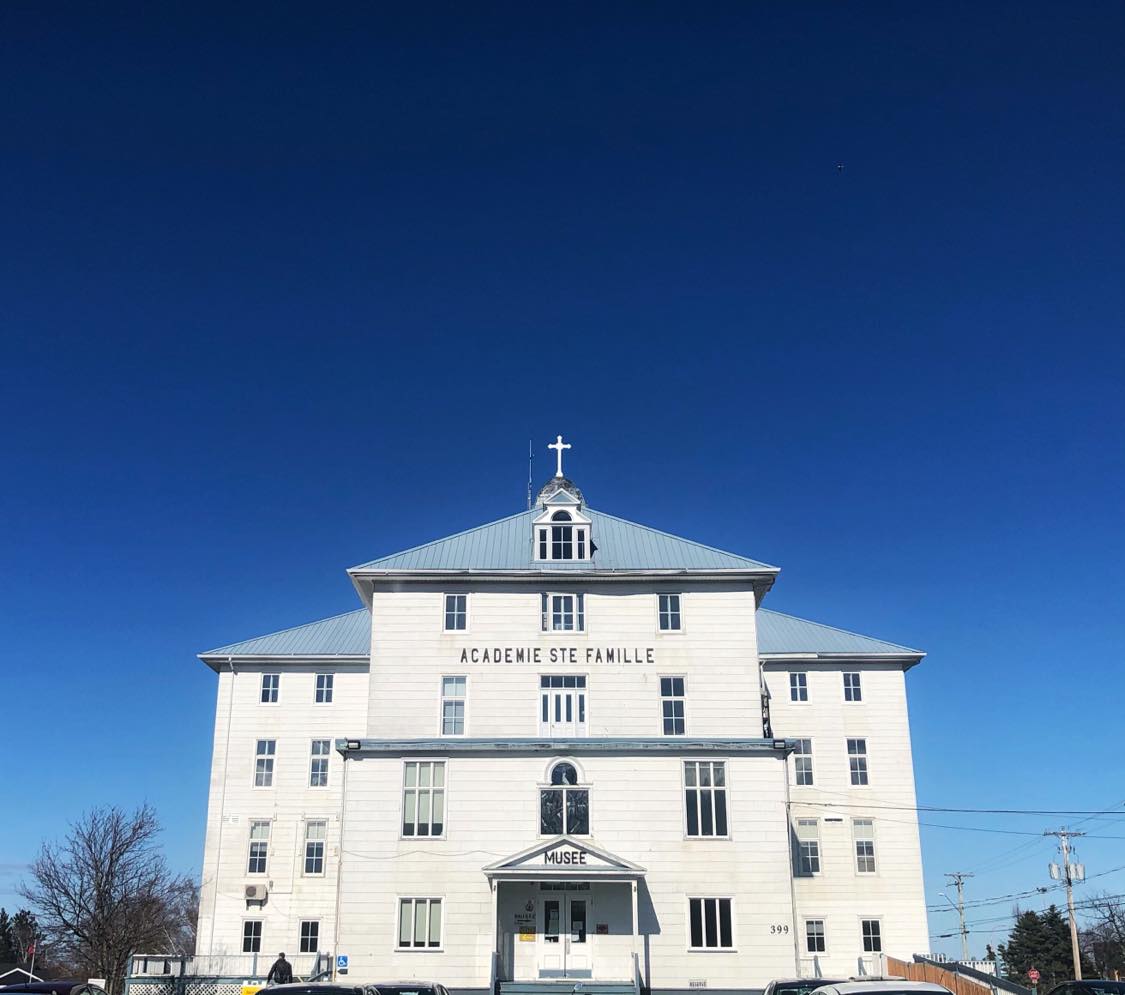
Artist residencies at the Académie Sainte-Famille
A series of artist residencies will be hosted in one of the two former dormitories on the 4th floor of the Académie Sainte-Famille Social & Cultural Centre in Tracadie-Sheila. Lasting two weeks each, the residencies will include a community workshop day to which representatives of different social groups will be invited. Caitlin Wilson’s prints are created using a combination of woodcut and intaglio methods. She explores her home province of New Brunswick by car, hiking, canoeing and even snowshoeing and documents her observations in drawings to the point of becoming completely absorbed by the ecosystem around her. Rotchild Choisy is interested in the perception of interpersonal relationships that people share with their environment. The contrast of colours, gesture, textures and the reinterpretation of Haitian and African symbols are important in his creations. Symbolism and allegory are also used to criticize intercultural, social, and political relations.
Important dates in 2023 📅
- May 15 to 26 → Residency and workshops with Caitilin Wilson – Open to all, registration here
- May 29 to June 9 → Residency and workshops with Rotchid Choisy – Open to all, registration here
- May 12 to June 23 → Residency and workshops with Gordon Sparks – Open to all, ici
- June 26 → Opening – Open to all, information here
- June 26 to July 15 → Exhibition at Galerie Nance 3 (opening of Activités Culturelles du Patrimoine) – Open to all

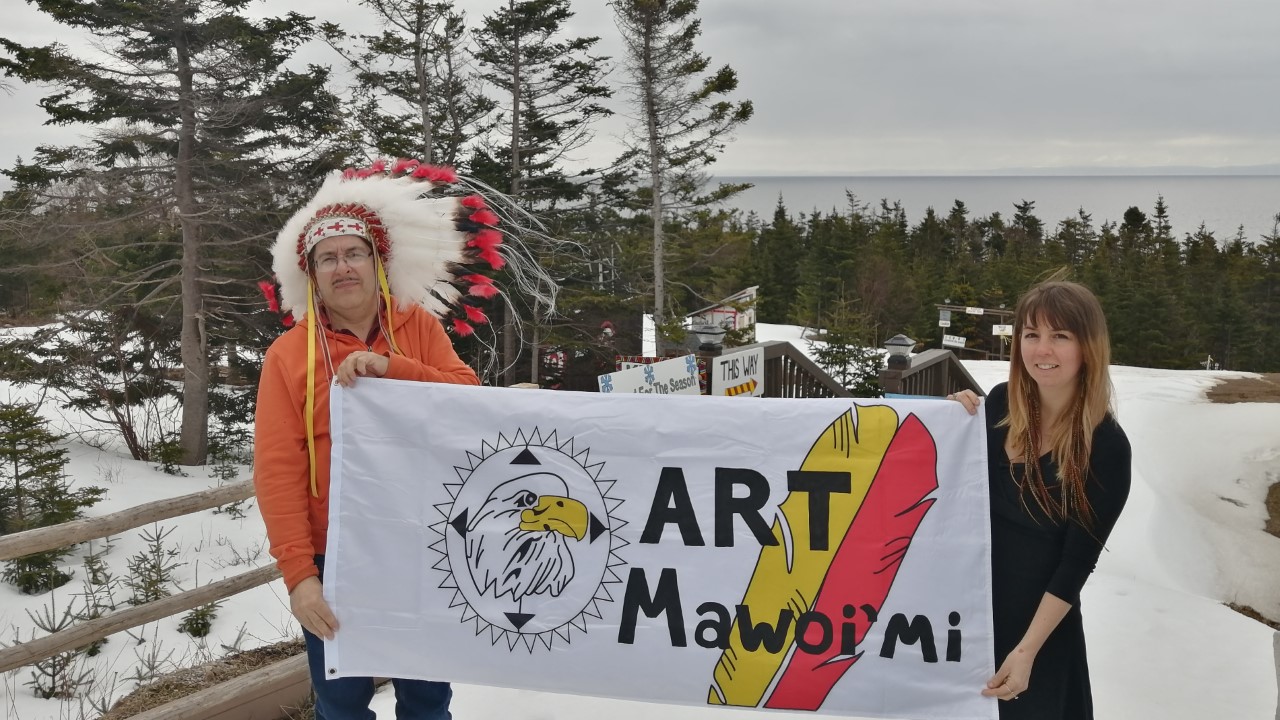
Art Mawoi’mi
We came together to paint a mural for this new sacred space of the Benoit First Nation. It is a space that brings the circle of people closer together—closer to their community and to their culture. Art Mawoi’mi is an event held on the date of the summer solstice, which is National Indigenous Peoples Day. It represents a new season of life for the Benoit First Nation. On July 22 and 23, the first official Benoit First Nation Mawoi’mi was held in Cape St. George. A Mawoi’mi is a ceremonial gathering, similar to a powwow, where the dancers dance around a sacred fire. It is a gathering of kinfolk and a place for people to come together and feel good about themselves and their culture.
School workshops were held in May along the Port au Port Peninsula, including at the St. Thomas Aquinas, Our Lady of the Cape, Notre Dame du Cap and Lourdes elementary schools. The objective of the workshops was to generate community interest in and promote an understanding of Art Mawoi’mi within the Riopelle Dialogues program, and the 100th anniversary and legacy of Jean Paul Riopelle. They were also intended to inspire young people to explore painting in various styles modelled on Riopelle’s work and to discover the unconscious realm of abstraction and the importance of art within Mi’kmaq culture. The workshops included a talk given by an artist and a painting session with the students.
The role of the community is vitally important for the completion of our project. Imagining a 56-foot mural can be overwhelming for one person, but working together as one community, we created an artwork expressing movement through the medium of paint. It was an event celebrating the elimination of boundaries and an opportunity to rediscover our cultural identity as Canadians and as Mi’kmaq of the Benoit First Nation.
Like Riopelle’s work, our creation of a mural will be a mosaic of colour, a sculptural piece. Children and elders will have messy hands-on fun, will have immersive contact with the materials and apply thick splashes of paint with their palette knives. By allowing the finished mural to be experimental and seeing the community’s joint creative work, Kassandra Simon will feel the essence of things within the work, give them clarity, and overlay figurative forms that represent Indigenous identity and significance for Riopelle. The completed mural will be permanently installed on the Mawoi’mi grounds behind the Benoit First Nation Mi’kmaq Centre, facing the ocean and the dancers. A grand unveiling and celebration of the project will attract attention during the Benoit First Nation Mawoi’mi in July. The Benoit First Nation and the community are very excited to be part of this sea-to-sea Riopelle Dialogues project, which fulfils Riopelle’s dream to create space where artists can meet and teach art techniques.
Important dates in 2023 📅
- May 18→ Workshop at Thomas Aquinas Elementary, in Port au Port
- May 19 → Workshop at Notre Dame du Cap school in Cape St. George
- May 25 → Workshop at Lourdes Elementary school
- May 26 → Workshop at Our Lady of the Cape
- June 21 → Opening and celebration at Benoit First Nation Center from 12pm to 4pm (National Indigenous Peoples Day) – Open to all

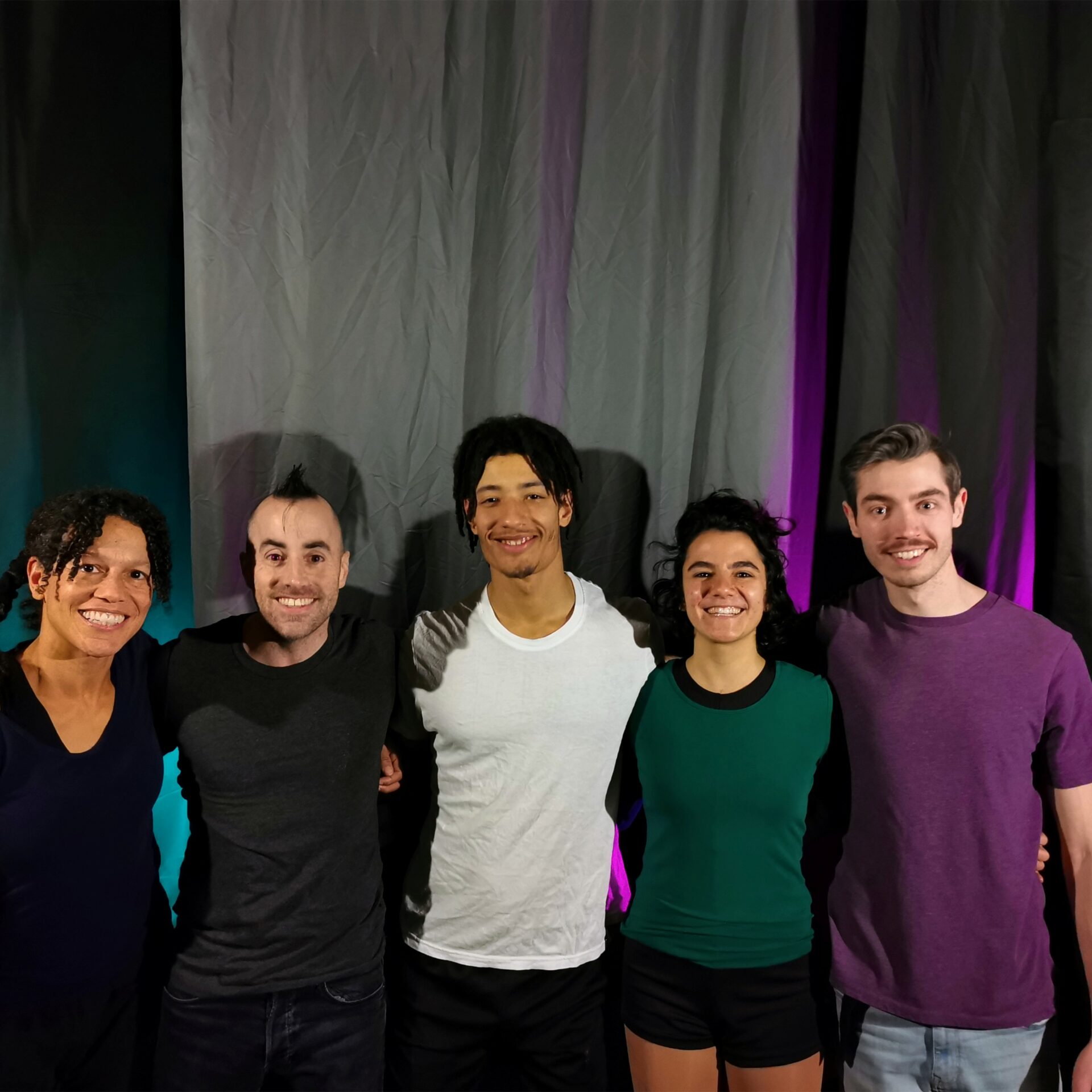
SANS TITRES/ WITHOUT TITLES
This project aims at co-creating, with Nova Scotia communities, performances integrating visual arts and circus arts inspired by the works of Jean Paul Riopelle and to hold community dialogues around the “Ode to Nature” theme.
Important dates in 2023 📅
- May 20 → painting of the parachutes
- May 24 to 27 → 1 performance per day, everyday at Studio Halifax – Open to all
- june 28 → Circus performance at Université Sainte-Anne

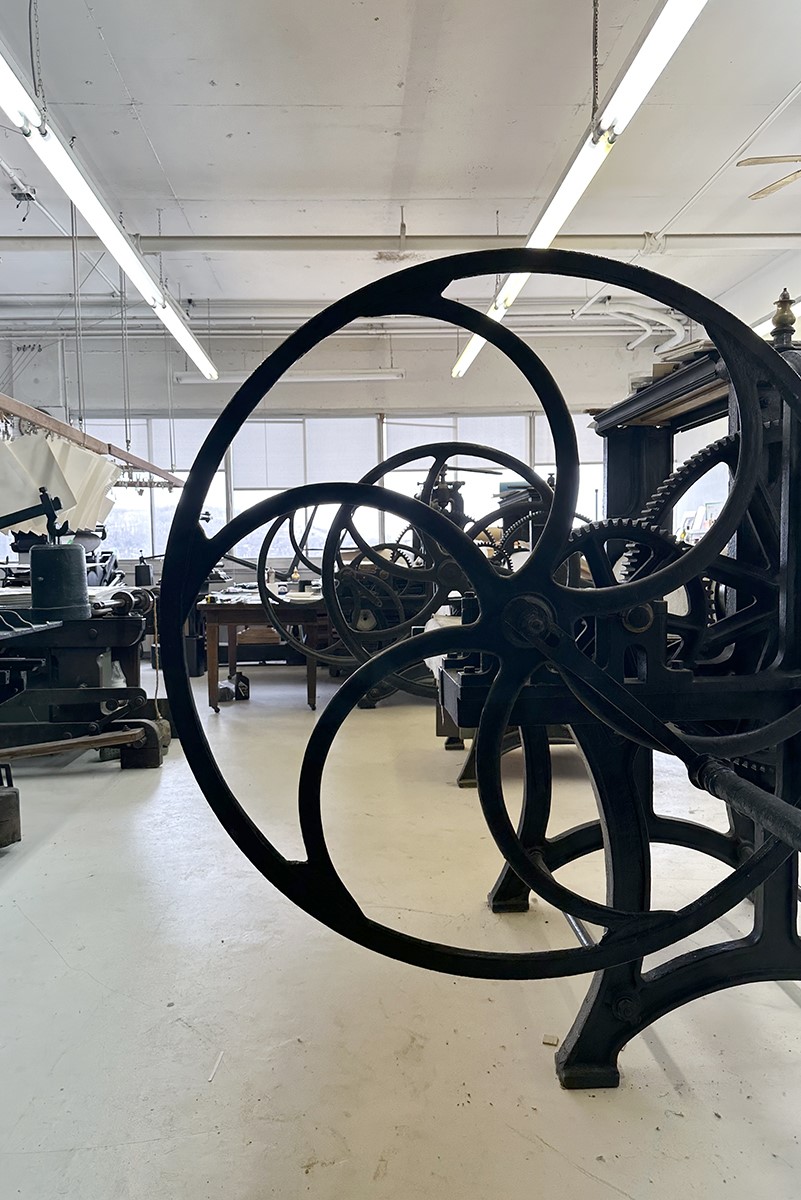
Three Conversations
The project brings together artists from various parts of Canada, such as Nunavut, Prince Edward Island, Quebec and Saskatchewan. Participants include Hélène Dorion, Joséphine Bacon, Chantal Ringuet, Jamasee Pitseolak, Peter Krausz, Catherine Farish, Olivier Bodart and Monique Martin. Each artist organizes community meetings in their home province or territory to encourage the active participation of local residents. The objective of this ambitious project, under the direction of Agathe Piroir, is to create an artists’ book that delves into the themes of nature, Indigenousness and migration by establishing dialogues between poetry and the visual arts that draw upon the works of Jean Paul Riopelle for inspiration.
The task of carrying out this project falls to the Atelier-Galerie A. Piroir, under the direction of Alain and Agathe Piroir, who are experienced master printers and engravers. They will provide support for the artists and promote the art of printmaking as a form of artistic expression. Agathe will supervise and bring the various stages of the project to fruition, from start to finish.
Workshops will be organized and facilitated by three poets and five visual artists specifically selected on the basis of the themes dealt with in the works of Jean Paul Riopelle. Each poet and artist will supervise a workshop focusing on one of the three main themes of the project. The objective is to promote creative exchanges, promote collaboration and provide participants with a rewarding experience that could be expanded into a unique artistic process.
The artists’ book, the project’s centrepiece, will consist of three poems translated into English and Innu‑Aimun as well as eight prints. The Atelier-Galerie A. Piroir will be responsible for producing and publishing this artwork, which will then be exhibited in four different locations, including at the Atelier-Galerie A. Piroir, the Trois-Rivières International Contemporary Print Biennial, the Musée des métiers d’art du Québec and the Bibliothèque et Archives nationales du Québec. At each of these locations, a presentation of the artists’ book will be organized to promote the artworks created as part of the project.
This ambitious project provides a unique opportunity to bring artists from across Canada together and create an artistic dialogue between poetry and the visual arts, while exploring essential themes, such as nature, Indigenousness and migration. It showcases the vital role that printmaking plays in our society and offers the public an unforgettable experience.
Important dates in 2023 📅
- April 28 → Olivier Bodart works at Galerie-atelier A.Piroir
- April 29 → Workshop class with Monique Martin (will work at Montreal workshop from May 16 to 20th)
- May 19 → Workshop class with Hélène Dorion
- May 26 → Workshop class with Chantal Ringuet – Open to all, registration here
- May 31 → Workshop class with Joséphine Bacon – Open to all, registration here
- June 15 to July 15 → Book exhibition at the Musée des métiers d’art du Québec – Open to all
- June 22 → Exhibition at the BANQ (Rosemont site) 2275 Holt street, Montreal – Open to all
- June 29 to August 10 → Exhibition of the book “Trois entretiens” at the 14th BIECTR (Bibliothèque de l’Université du Québec à Trois-Rivières)
- July 5 → Presentation at the Bibliothèque de l’UQTR, Salon Alexis Klimov
- July 6 → Olivier Bodart’s workshop class – Open to all
- July 15 → Book launch – Open to all
- July 11 to 22 → Exhibition at Atelier-Galerie A.Piroir – Open to all

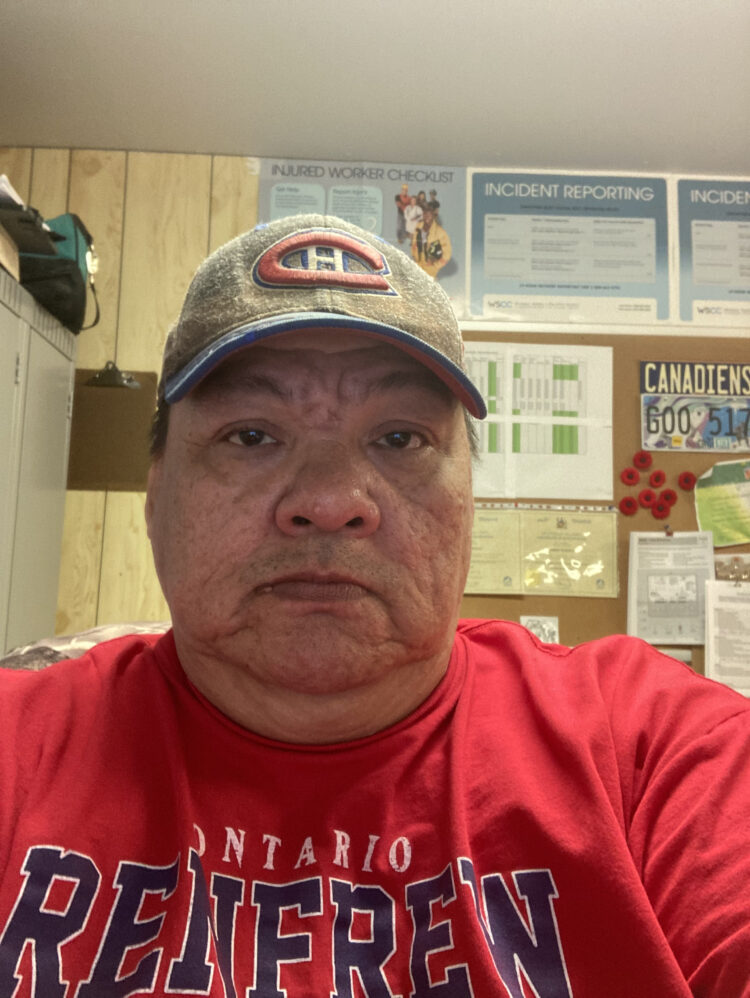
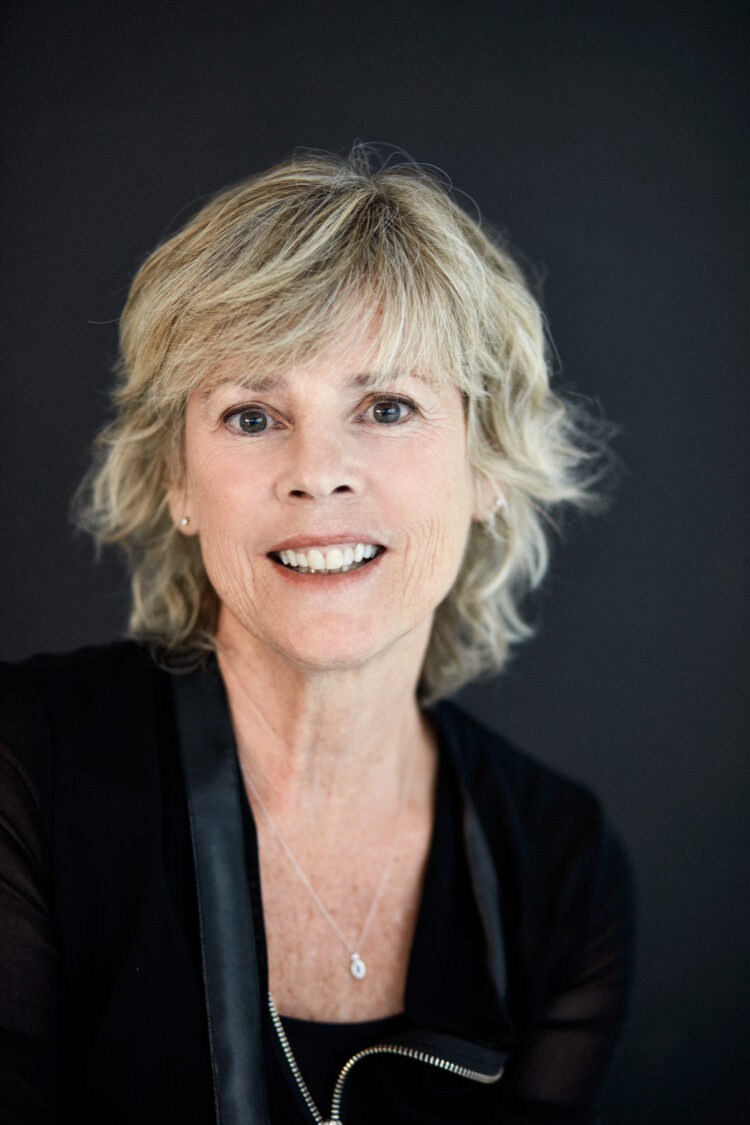
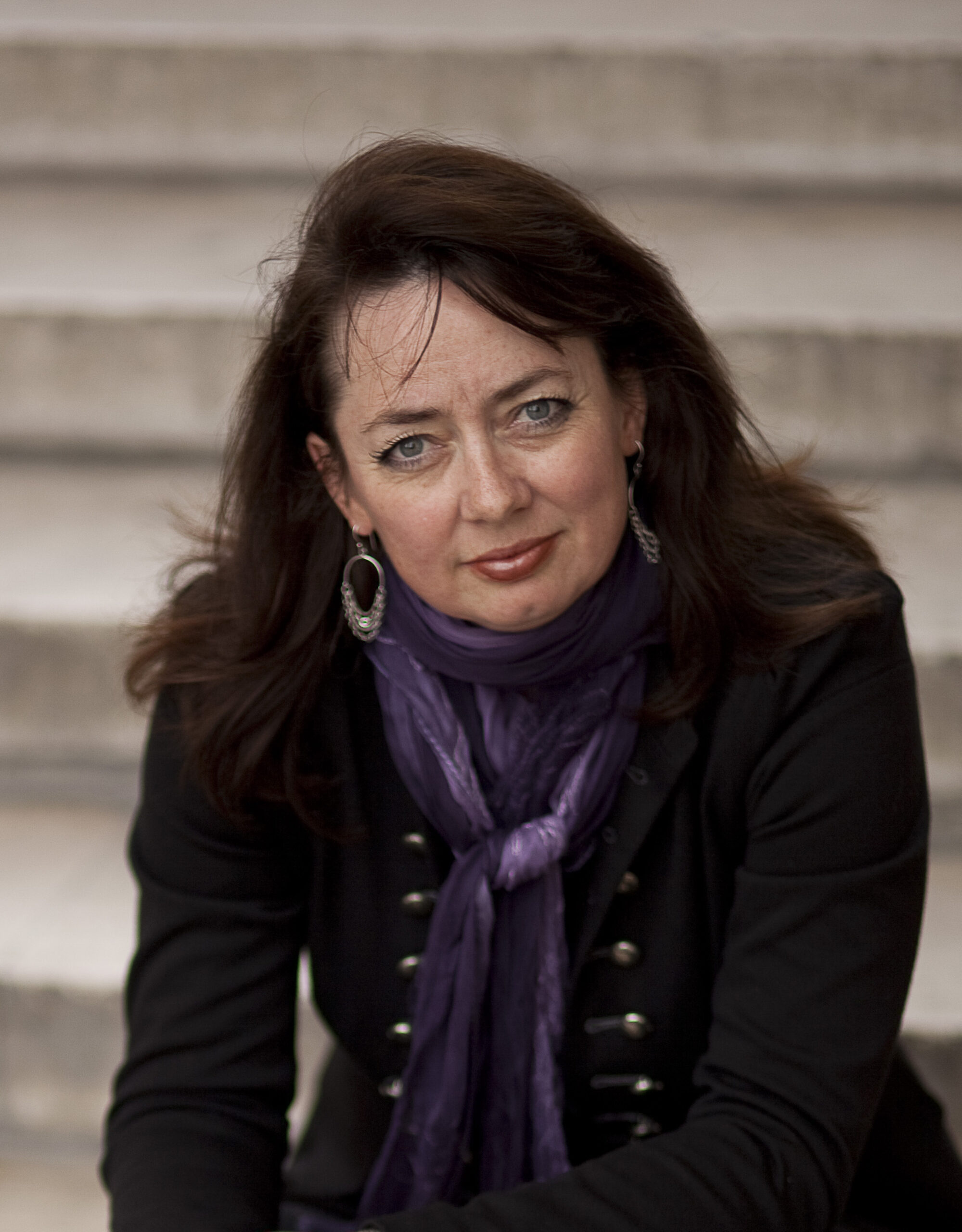
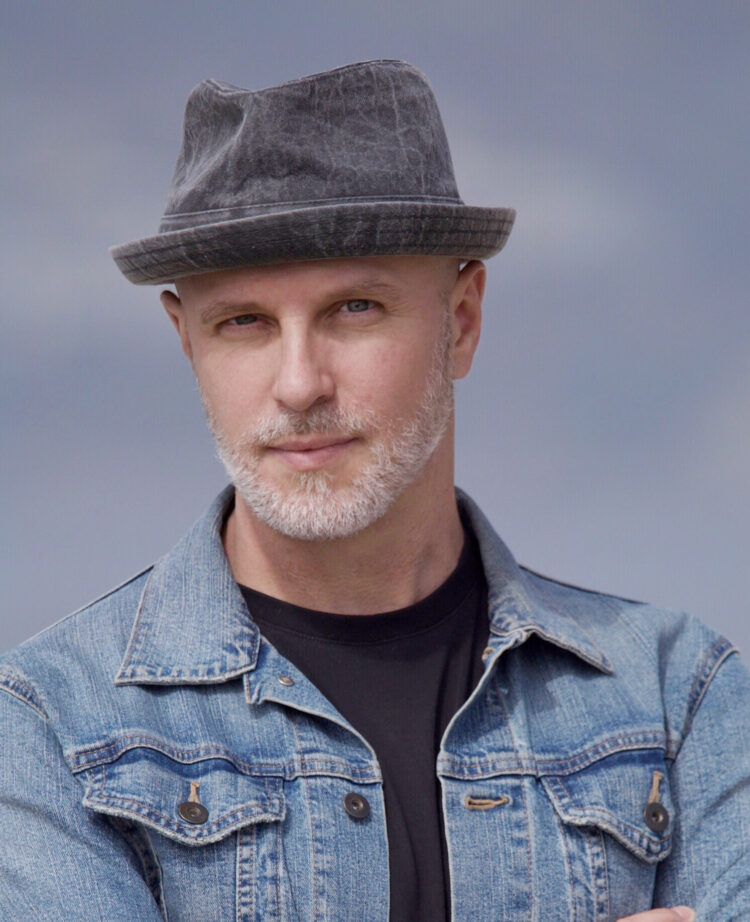
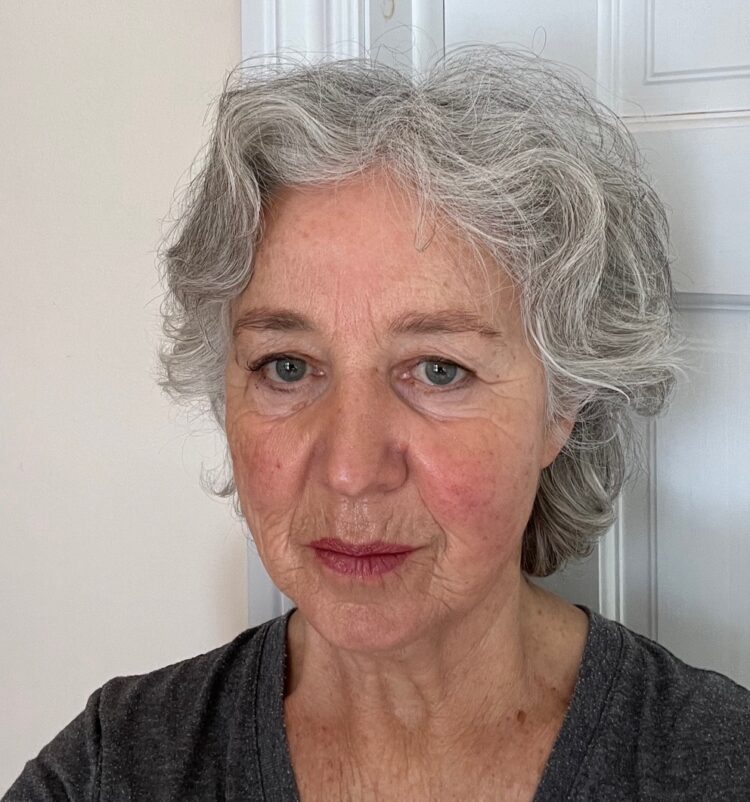
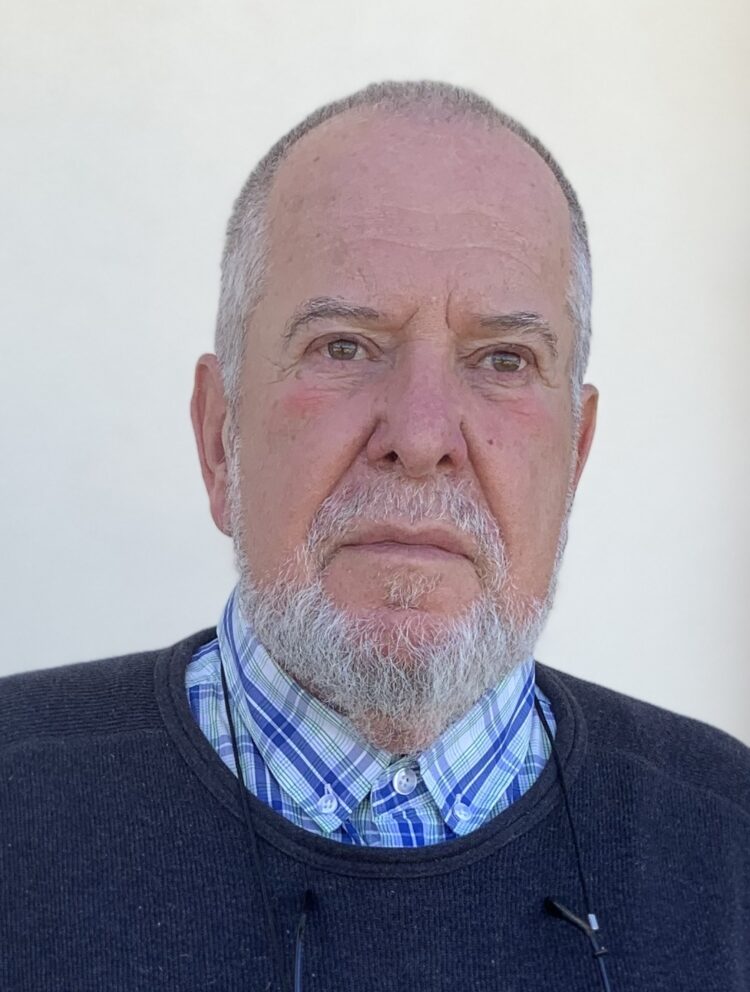
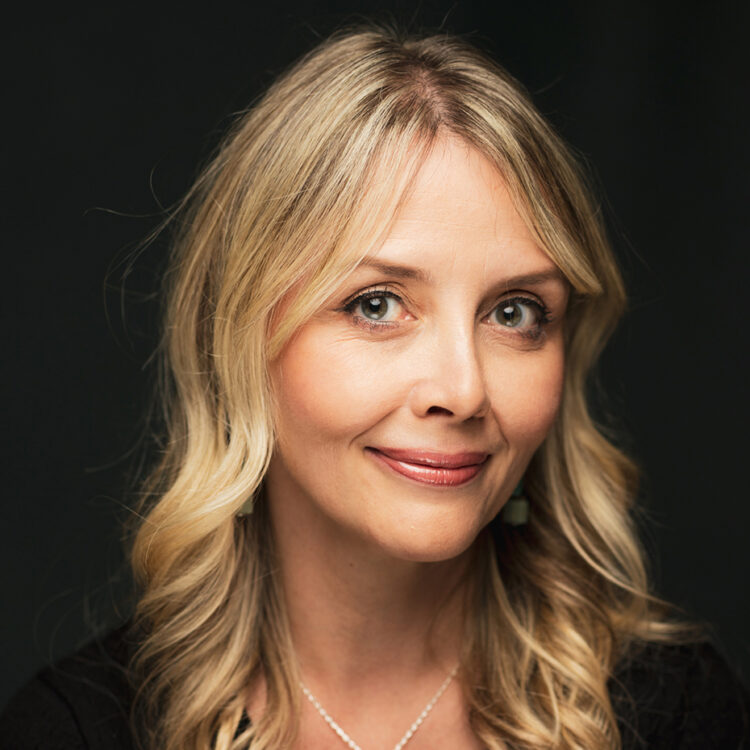
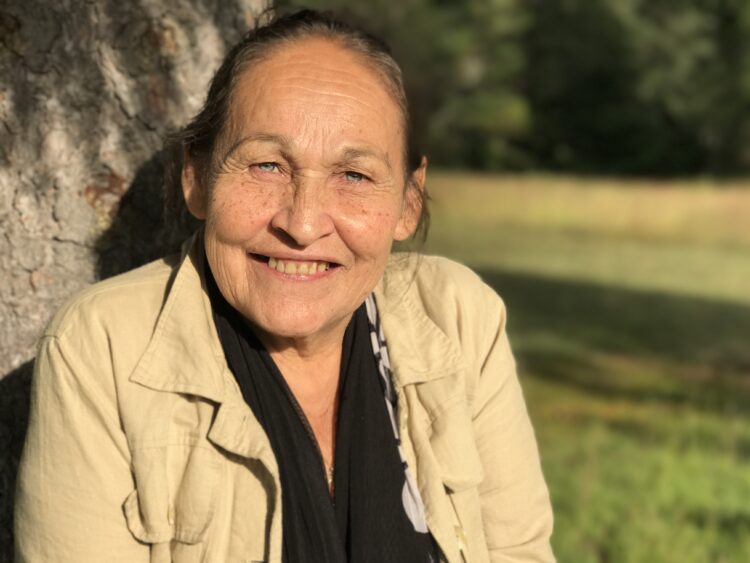
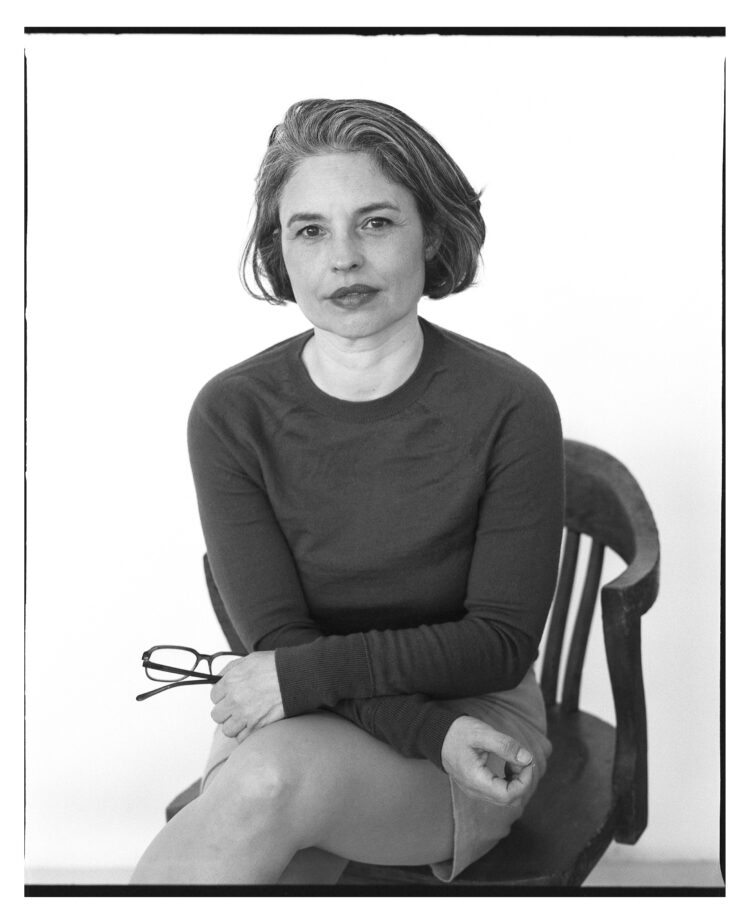

Land: echoes and dissonances
This collaborative project brought together a group of Indigenous and non-Indigenous visual artists who were asked to express their own vision of the idea of territory, using the urban landscape of the Ottawa-Gatineau region for their inspiration. It was organized in conjunction with the Mauril-Bélanger Social Innovation Workshop, an organization working for justice and social transformation.
During two walking tours and a workshop, participants had an opportunity to rediscover two historic sites undergoing major urban transformations. On May 13, the poet and Kitigan Zibi Elder Albert Dumont led a walking tour during which he explained the cultural significance and sacredness of the Akikodjiwan site (Chaudière Falls) for the Anishinaabe Nation. On May 14, historian Michel Prévost gave a presentation, followed by a discussion workshop, about the history of the LeBreton Flats and Chaudière Falls and the many transformations that occurred there in the past or are planned for the future. This is also an important area for the capital’s French-speaking community.
The key topics for discussion during this workshop were nature, the post-industrial urban setting and the democratic process. These encounters initiated a dialogue between local residents from different generations and cultures about the transformations of the landscape brought about by major real estate projects underway in the capital.
The artists were asked to create an artistic restitution by drawing upon the discussion topics for inspiration and, to varying degrees, addressing the issues that came up in the workshop. Employing various approaches, they brought their own visions to bear, using both traditional and updated practices, such as contemporary beadwork or photographic or technology-based tools such as 3D modelling. Echoing the legacy of Jean Paul Riopelle, the artists’ works raise questions in equal measure about landscapes, nature and what is sacred. The urban territory is analyzed in Mathieu Gagnon’s images and reproduced as a motif in Mathilde Forest’s work. A bestiary (medieval book of beasts) comes to mind when viewing the masterful materiality of Craig Commanda’s work, while Jobena Petonoquot’s work conveys a profound symbolism.
The project will end in the late summer with an outdoor exhibition at the SAW Gallery in Ottawa’s Arts Court. During a presentation given by the artists at the opening on July 4, the public will learn more about the project and be able to participate in a continuation of the discussions initiated during this cultural mediation exercise.
Important dates in 2023 📅
- May 13 → Rediscovering Akikodjiwan (Chaudière Falls) with Albert Dumont, Kitigan Zibi poet and activist, accompanied by Monique Manatch – Open to all, register by email: atelier@innovationsocialeusp.ca or by phone: (613) 782-3006
- May 14 → Historical walk and discussion with Michel Prévost – the troubled history of LeBreton Flats and the built heritage of the Chaudière Falls – Open to all, register by email: atelier@innovationsocialeusp.ca or by phone: (613) 782-3006
- July 4 → Opening of the exhibition in the presence of the artists, outdoor exhibition in the SAW Centre (Arts Court in Ottawa) – Open to all


Three Conversations
The project brings together artists from various parts of Canada, such as Nunavut, Prince Edward Island, Quebec and Saskatchewan. Participants include Hélène Dorion, Joséphine Bacon, Chantal Ringuet, Jamasee Pitseolak, Peter Krausz, Catherine Farish, Olivier Bodart and Monique Martin. Each artist organizes community meetings in their home province or territory to encourage the active participation of local residents. The objective of this ambitious project, under the direction of Agathe Piroir, is to create an artists’ book that delves into the themes of nature, Indigenousness and migration by establishing dialogues between poetry and the visual arts that draw upon the works of Jean Paul Riopelle for inspiration.
The task of carrying out this project falls to the Atelier-Galerie A. Piroir, under the direction of Alain and Agathe Piroir, who are experienced master printers and engravers. They will provide support for the artists and promote the art of printmaking as a form of artistic expression. Agathe will supervise and bring the various stages of the project to fruition, from start to finish.
Workshops will be organized and facilitated by three poets and five visual artists specifically selected on the basis of the themes dealt with in the works of Jean Paul Riopelle. Each poet and artist will supervise a workshop focusing on one of the three main themes of the project. The objective is to promote creative exchanges, promote collaboration and provide participants with a rewarding experience that could be expanded into a unique artistic process.
The artists’ book, the project’s centrepiece, will consist of three poems translated into English and Innu‑Aimun as well as eight prints. The Atelier-Galerie A. Piroir will be responsible for producing and publishing this artwork, which will then be exhibited in four different locations, including at the Atelier-Galerie A. Piroir, the Trois-Rivières International Contemporary Print Biennial, the Musée des métiers d’art du Québec and the Bibliothèque et Archives nationales du Québec. At each of these locations, a presentation of the artists’ book will be organized to promote the artworks created as part of the project.
This ambitious project provides a unique opportunity to bring artists from across Canada together and create an artistic dialogue between poetry and the visual arts, while exploring essential themes, such as nature, Indigenousness and migration. It showcases the vital role that printmaking plays in our society and offers the public an unforgettable experience.
Important dates in 2023 📅
- April 28 → Olivier Bodart works at Galerie-atelier A.Piroir
- April 29 → Workshop class with Monique Martin (will work at Montreal workshop from May 16 to 20th)
- May 19 → Workshop class with Hélène Dorion
- May 26 → Workshop class with Chantal Ringuet – Open to all, registration here
- May 31 → Workshop class with Joséphine Bacon – Open to all, registration here
- June 15 to July 15 → Book exhibition at the Musée des métiers d’art du Québec – Open to all
- June 22 → Exhibition at the BANQ (Rosemont site) 2275 Holt street, Montreal – Open to all
- June 29 to August 10 → Exhibition of the book “Trois entretiens” at the 14th BIECTR (Bibliothèque de l’Université du Québec à Trois-Rivières)
- July 5 → Presentation at the Bibliothèque de l’UQTR, Salon Alexis Klimov
- July 6 → Olivier Bodart’s workshop class – Open to all
- July 15 → Book launch – Open to all
- July 11 to 22 → Exhibition at Atelier-Galerie A.Piroir – Open to all










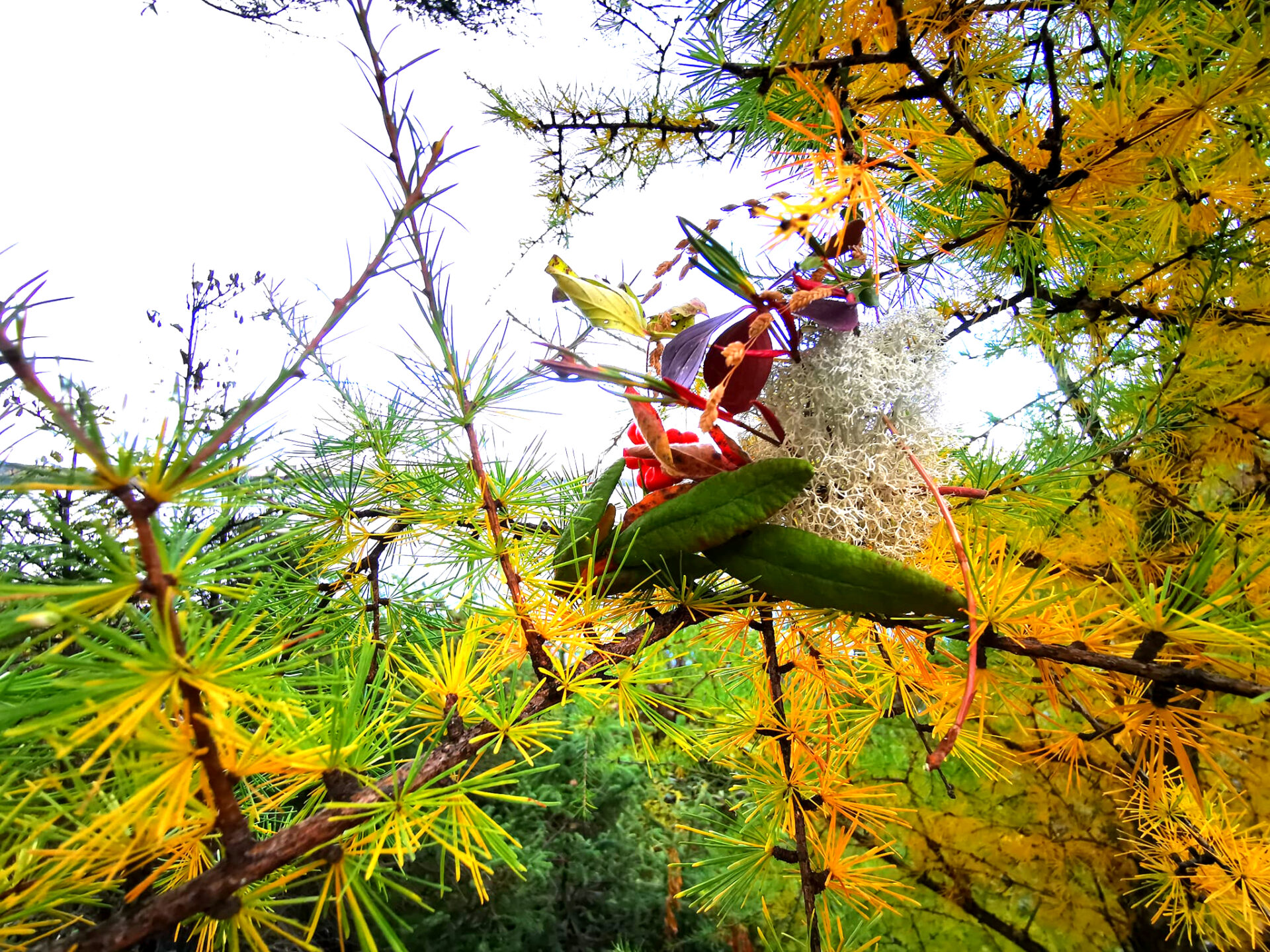
Kanitau-unahitshesht. Homage to the High Trapper
This Homage to the High Trapper/Kanitau-unahitshesht is an inverted reference to Riopelle’s famous masterpiece L’Hommage à Rosa Luxemburg, the “high trapper” – Kanitau-unahitshesht in the Ilnu language – a nickname coined by André Breton, leader of the Surrealist movement. To create the series of paintings in L’Hommage à Rosa Luxemburg, Riopelle took long walks on Isle-aux-Grues and Ile-aux-Oies and collected various objects and fauna and flora samples. He would then place these objects on wooden boards and stencil them with spray paint. The youth of Mashteuiatsh, in the region of Lac-Saint-Jean, will be called upon to apply a similar process to various objects from their immediate environment found on their Indigenous community’s territory to create their own artworks. They will collect sounds from their space and create compositions using fonofone-image, an innovative digital tool developed by project partner Cosimu to combine music and image.
Important dates in 2023 📅
- June 1st → Launch at Old Convent of Saint-Prime
- All summer 2023 → Exhibition at the Vieux Couvent of Saint-Prime and the Mashteuiatsh Museum


Three Conversations
The project brings together artists from various parts of Canada, such as Nunavut, Prince Edward Island, Quebec and Saskatchewan. Participants include Hélène Dorion, Joséphine Bacon, Chantal Ringuet, Jamasee Pitseolak, Peter Krausz, Catherine Farish, Olivier Bodart and Monique Martin. Each artist organizes community meetings in their home province or territory to encourage the active participation of local residents. The objective of this ambitious project, under the direction of Agathe Piroir, is to create an artists’ book that delves into the themes of nature, Indigenousness and migration by establishing dialogues between poetry and the visual arts that draw upon the works of Jean Paul Riopelle for inspiration.
The task of carrying out this project falls to the Atelier-Galerie A. Piroir, under the direction of Alain and Agathe Piroir, who are experienced master printers and engravers. They will provide support for the artists and promote the art of printmaking as a form of artistic expression. Agathe will supervise and bring the various stages of the project to fruition, from start to finish.
Workshops will be organized and facilitated by three poets and five visual artists specifically selected on the basis of the themes dealt with in the works of Jean Paul Riopelle. Each poet and artist will supervise a workshop focusing on one of the three main themes of the project. The objective is to promote creative exchanges, promote collaboration and provide participants with a rewarding experience that could be expanded into a unique artistic process.
The artists’ book, the project’s centrepiece, will consist of three poems translated into English and Innu‑Aimun as well as eight prints. The Atelier-Galerie A. Piroir will be responsible for producing and publishing this artwork, which will then be exhibited in four different locations, including at the Atelier-Galerie A. Piroir, the Trois-Rivières International Contemporary Print Biennial, the Musée des métiers d’art du Québec and the Bibliothèque et Archives nationales du Québec. At each of these locations, a presentation of the artists’ book will be organized to promote the artworks created as part of the project.
This ambitious project provides a unique opportunity to bring artists from across Canada together and create an artistic dialogue between poetry and the visual arts, while exploring essential themes, such as nature, Indigenousness and migration. It showcases the vital role that printmaking plays in our society and offers the public an unforgettable experience.
Important dates in 2023 📅
- April 28 → Olivier Bodart works at Galerie-atelier A.Piroir
- April 29 → Workshop class with Monique Martin (will work at Montreal workshop from May 16 to 20th)
- May 19 → Workshop class with Hélène Dorion
- May 26 → Workshop class with Chantal Ringuet – Open to all, registration here
- May 31 → Workshop class with Joséphine Bacon – Open to all, registration here
- June 15 to July 15 → Book exhibition at the Musée des métiers d’art du Québec – Open to all
- June 22 → Exhibition at the BANQ (Rosemont site) 2275 Holt street, Montreal – Open to all
- June 29 to August 10 → Exhibition of the book “Trois entretiens” at the 14th BIECTR (Bibliothèque de l’Université du Québec à Trois-Rivières)
- July 5 → Presentation at the Bibliothèque de l’UQTR, Salon Alexis Klimov
- July 6 → Olivier Bodart’s workshop class – Open to all
- July 15 → Book launch – Open to all
- July 11 to 22 → Exhibition at Atelier-Galerie A.Piroir – Open to all












Three Conversations
The project brings together artists from various parts of Canada, such as Nunavut, Prince Edward Island, Quebec and Saskatchewan. Participants include Hélène Dorion, Joséphine Bacon, Chantal Ringuet, Jamasee Pitseolak, Peter Krausz, Catherine Farish, Olivier Bodart and Monique Martin. Each artist organizes community meetings in their home province or territory to encourage the active participation of local residents. The objective of this ambitious project, under the direction of Agathe Piroir, is to create an artists’ book that delves into the themes of nature, Indigenousness and migration by establishing dialogues between poetry and the visual arts that draw upon the works of Jean Paul Riopelle for inspiration.
The task of carrying out this project falls to the Atelier-Galerie A. Piroir, under the direction of Alain and Agathe Piroir, who are experienced master printers and engravers. They will provide support for the artists and promote the art of printmaking as a form of artistic expression. Agathe will supervise and bring the various stages of the project to fruition, from start to finish.
Workshops will be organized and facilitated by three poets and five visual artists specifically selected on the basis of the themes dealt with in the works of Jean Paul Riopelle. Each poet and artist will supervise a workshop focusing on one of the three main themes of the project. The objective is to promote creative exchanges, promote collaboration and provide participants with a rewarding experience that could be expanded into a unique artistic process.
The artists’ book, the project’s centrepiece, will consist of three poems translated into English and Innu‑Aimun as well as eight prints. The Atelier-Galerie A. Piroir will be responsible for producing and publishing this artwork, which will then be exhibited in four different locations, including at the Atelier-Galerie A. Piroir, the Trois-Rivières International Contemporary Print Biennial, the Musée des métiers d’art du Québec and the Bibliothèque et Archives nationales du Québec. At each of these locations, a presentation of the artists’ book will be organized to promote the artworks created as part of the project.
This ambitious project provides a unique opportunity to bring artists from across Canada together and create an artistic dialogue between poetry and the visual arts, while exploring essential themes, such as nature, Indigenousness and migration. It showcases the vital role that printmaking plays in our society and offers the public an unforgettable experience.
Important dates in 2023 📅
- April 28 → Olivier Bodart works at Galerie-atelier A.Piroir
- April 29 → Workshop class with Monique Martin (will work at Montreal workshop from May 16 to 20th)
- May 19 → Workshop class with Hélène Dorion
- May 26 → Workshop class with Chantal Ringuet – Open to all, registration here
- May 31 → Workshop class with Joséphine Bacon – Open to all, registration here
- June 15 to July 15 → Book exhibition at the Musée des métiers d’art du Québec – Open to all
- June 22 → Exhibition at the BANQ (Rosemont site) 2275 Holt street, Montreal – Open to all
- June 29 to August 10 → Exhibition of the book “Trois entretiens” at the 14th BIECTR (Bibliothèque de l’Université du Québec à Trois-Rivières)
- July 5 → Presentation at the Bibliothèque de l’UQTR, Salon Alexis Klimov
- July 6 → Olivier Bodart’s workshop class – Open to all
- July 15 → Book launch – Open to all
- July 11 to 22 → Exhibition at Atelier-Galerie A.Piroir – Open to all










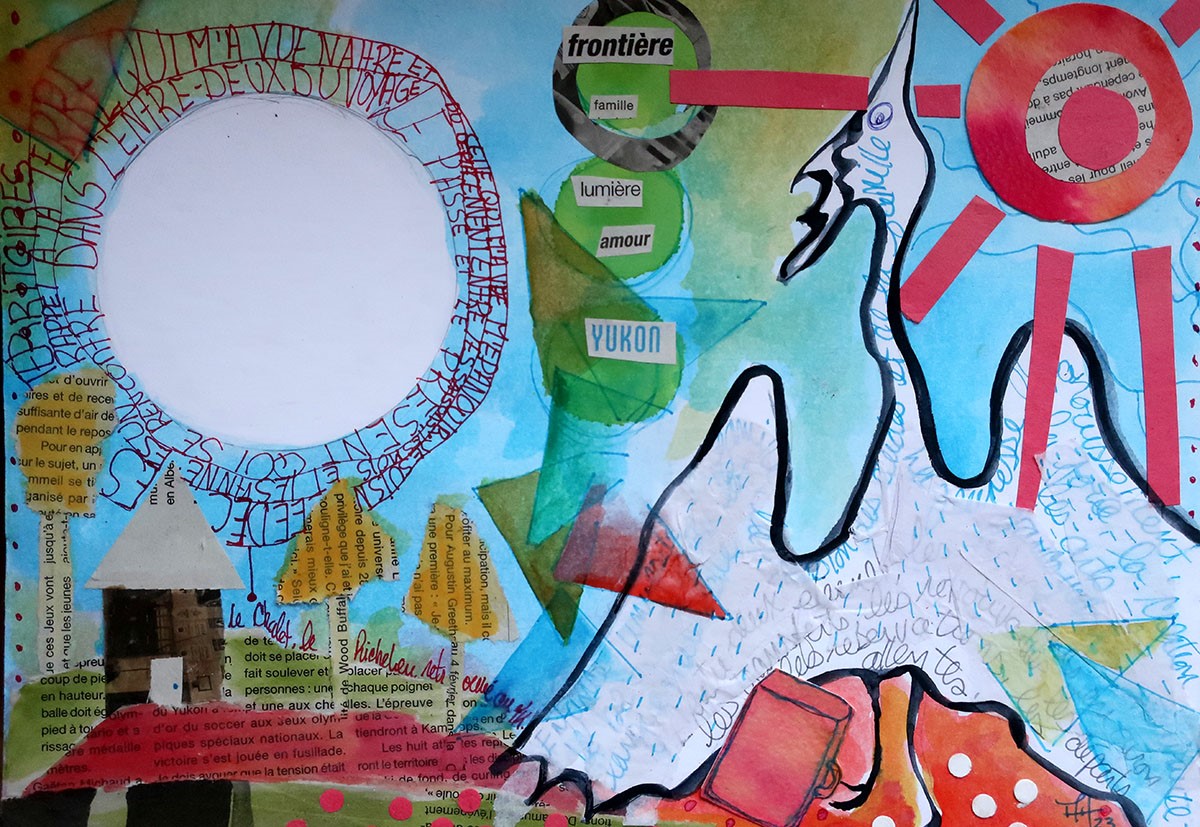
Riopelle, the artist on the wing of a northern migration
Forty creative art kits based on the theme of migration and inspired by Jean Paul Riopelle’s work Tribute to Rosa Luxemburg have been sent to 40 Francophones and Francophiles living in Yukon. To commemorate the 40th anniversary of the Association franco-yukonnaise and the Aurore boréale newspaper, they have been invited to use the materials in the kits to illustrate their story of migration to Yukon from the place they came from. The individual projects will be gathered together and exhibited at the Riverside Art Festival in Dawson City in early June, then in Whitehorse on June 24 during the Saint-Jean-Baptiste holiday. In May and June, art workshops based on the migration theme will also be held for various Franco-Yukon community organizations, including the Garderie du petit cheval blanc and Les Essentielles and at the day camp. Lastly, book creation workshops (water colours, collages and creative writing) that explore Franco-Yukon migration stories will also be held on the exhibition dates.
Participants can use the art kits, which are designed for people living throughout Yukon, to create their artwork at home by compiling dialogues about their migration story with their family members and friends. The workshops will make it possible to share these stories with a wider audience and the general public.
To date, the project has been a great success with the Franco-Yukon community. The kits were all taken in less than a week. People like to share their stories as well as talk about their relationship with Riopelle’s works. Reference books about the artist are always on hand at the workshops and consulted on a regular basis.
Yukon organizations are looking forward to hosting the next workshops and a second Yukon exhibition date for the 40 artworks will be scheduled during the project.
In just a few weeks, the project has already prompted Yukon residents, the majority of whom were born outside the territory, to reflect on, share and listen to their migration stories. The project encourages dialogue through the creative art process.
Important dates in 2023 📅
- May 9 → Parents & kids sessions, Whitehorse (at Les essentielles, a nonprofit organization) – Open to all
- May 17, 18 and 19 → Sessions for the children and staff of le Petit Cheval Blanc, a francophone daycare
- June 2 to June 4 → Yukon Riverside Art festival in Dawson city – First vernissage of the 40 works of Franco-Yukon migration stories. An art workshop on the subject of Yukon migration will also be offered on site during the event – Open to all
- June 19 and 20, 22 and 23 → Francophone daycamp sessions
- June 24 → Opening : artworks exhibition (Association franco-yukonnaise’ 40th anniversary) – Open to all



